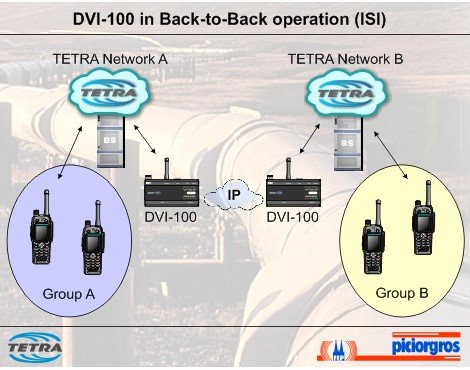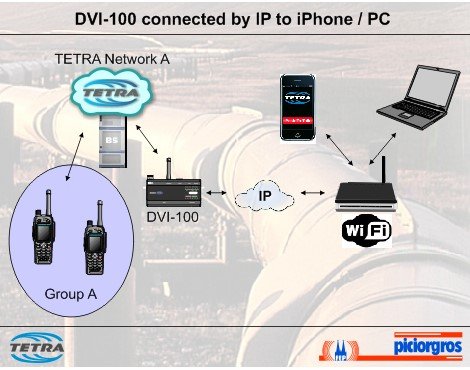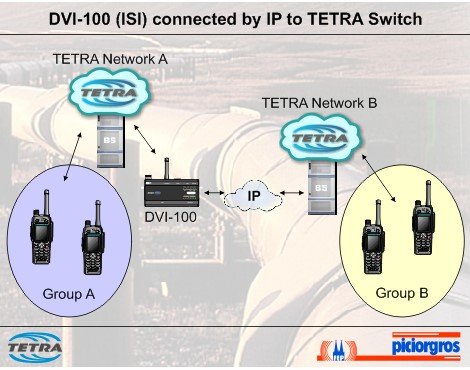DVI-100
1872 Views |
DVI-100

The DVI-100 (Digital Voice Interface) will be attached to a TETRA Network in the same way as a normal TETRA hand portable, and it can be a member of up to five (optional more) groups. When it receives a voice call, rather than decoding the digitally coded ACELP data stream into analog audio and feeding it to the Loudspeaker, it is sent as a digital (UDP) data stream to its IP port. Connecting two DVI-100s back-to-back with each device connected to a different TETRA network (which could be different infrastructure manufacturer, different frequency bands or geographically separated), allows the networks to be “interconnected” based on group calls, status messages, and short data messages. As the voice data stream is not converted back into an analog signal at any time, the voice quality has the same brilliant quality as received with a TETRA hand portable.
Applications:
- Connecting TETRA networks of different manufactures
- Connecting TETRA networks of different frequencies
- Connecting TETRA networks with different MCC, MNC
- Connecting encrypted and unencrypted TETRA networks
- Establishing in house coverage
- Covering "white spots"
- Establishing temporary TETRA coverage
- Establishing out of the network coverage
- Mobile TETRA Hot Spot
DVI-100 - Back-to-Back Operation
With two DVI-100’s logged into different TETRA networks and by connecting them via Back-to-Back IP, an easy ISI for voice and SDS transmission can be implemented.

Connecting the iPhone or a Computer to the DVI-100
Using the DVI with IP, the voice data can easily be sent to, or received by, a remote application, potentially running on any type of device. This allows the voice call to be bridged between the TETRA infrastructure and another device. An iPhone application is available, as well as Java based software for Mac or Windows Computers. This application can be useful, if a user needs to talk or just listen to a group within a TETRA network, even when they are out of coverage of the TETRA network.

DVI-100 - Connected by IP directly to a TETRA switch
The PTX Protocol developed by the University of Dortmund and Piciorgros GmbH is license free and can be implemented to an interface device (PC) or directly into a TETRA switch. So an Inter System Interface (ISI) for voice and data based on groups can easily be implemented.

TETRA MircoSPOT with DVI-100 in DMO mode
This configuration can be used to create a local TETRA access point (MicoSPOT) which operates in DMO mode. The DVI-100 in DMO mode is connected by an IP connection to another DVI-100 in server mode, which is attached to a TETRA network.
All TETRA terminals in DMO mode and in range of the DVI-100 MicroSPOT can access the configured group(s) of the trunked TETRA network by using voice, SDS and status communication.
Sample applications for the MicoSPOT can be improving inhouse coverage or covering white spots inside a TETRA network. By using a reliable mobile IP link (3G or LTE) mobile forces can use the TETRA network even in uncovered areas.

